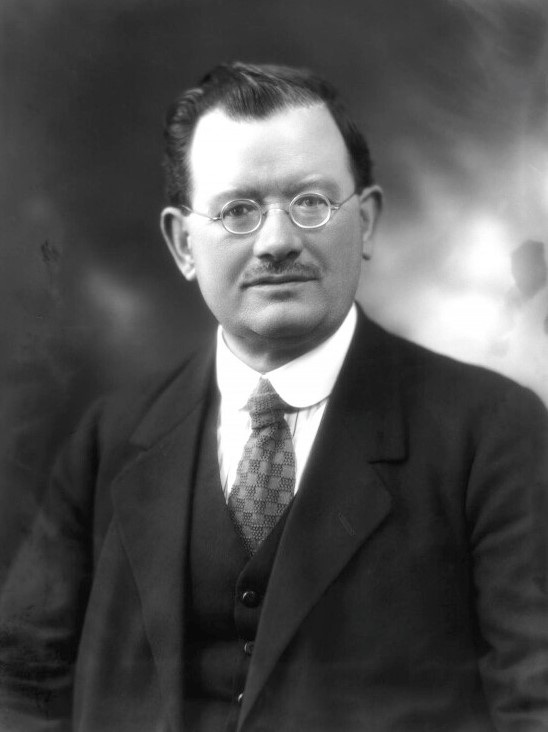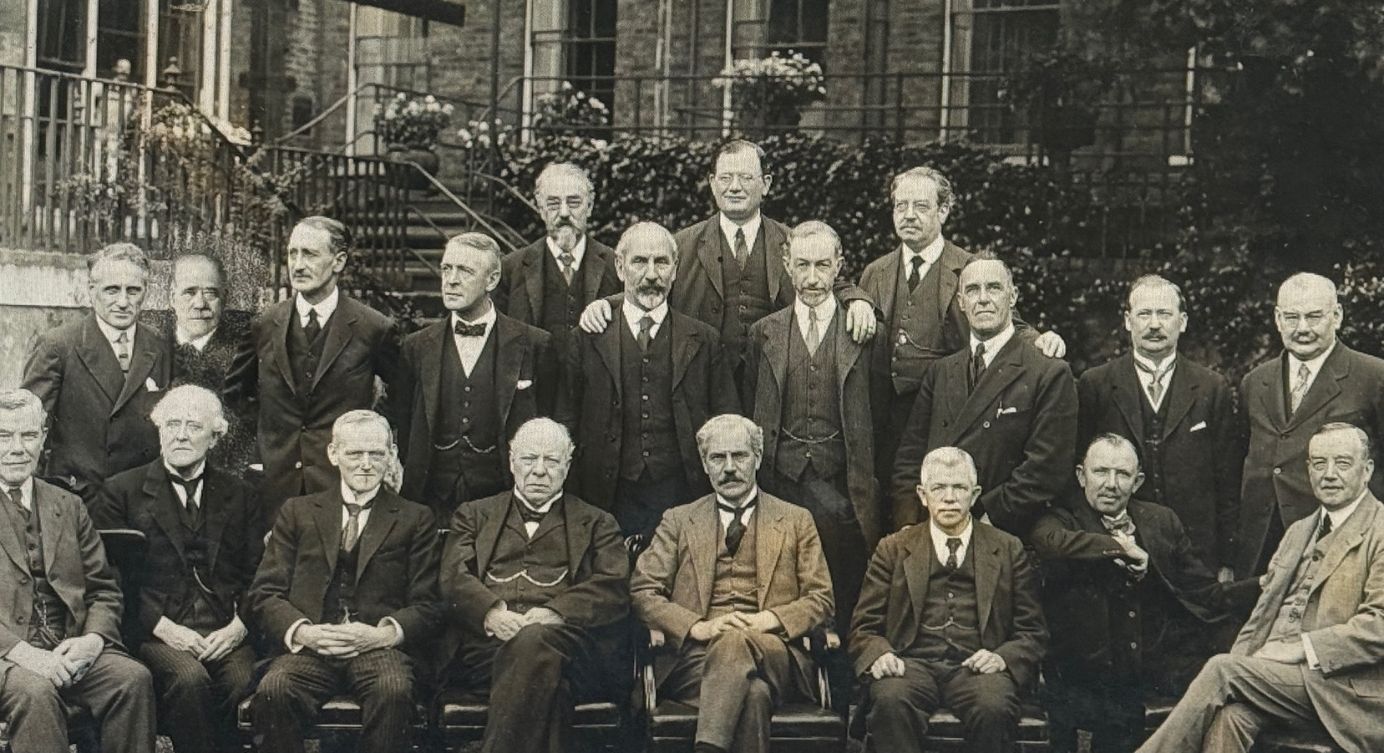In 2024, Sir Keir Starmer became the new Prime Minister of the United Kingdom. As leader of the Labour party, he swept to power with 412 seats in Parliament. As a share of seats, 63%, he nearly equalled that of Tony Blair’s first Labour government in 1997 (63.4%). But Labour achieved this by getting only 34% of the overall vote. Exactly 100 years earlier, in 1924, the story was strangely different.
For it was in 1924 that saw the first ever Labour government. Ramsay MacDonald became PM with only 24% of the seats in Parliament, compared to Starmer’s 63%. The strange part is they got nearly same popular vote: 33% for MacDonald, only a point less than Starmer. For more than a century, many have complained about the disparity of votes cast versus seats gained, but that is the system! Proportional representation was narrowly defeated in a Parliamentary vote in 1918.
The author of this book about the men who formed that first government is Peter Clark, a Research Associate at SOAS, University of London. He worked in the overseas service of the British Council for over thirty years, has translated novels, plays and history from Arabic, and written books including Churchill’s Britain, Dickens’s London and Dickens’s Kent.
King George V got on remarkably well with the Men of 1924. John Robert Clynes, writes Clark, “is the least known of the leading figures of the early twentieth-century Labour Party.” He was, however, well known to the King.
“During the war Clynes developed a regard for the royal family for their public spirit and especially for King George V. Lawns at Windsor Castle were dug up and turned into vegetable plots. The regard was reciprocated, and Clynes was invited to the wedding of the king’s daughter, Princess Mary. For this he faced criticism from some Labour MPs; Clynes argued ingenuously that he was there representing the working class.” The King even had a meeting of the minds with the most radical Communist of the Cabinet, John Wheatley (see photo). PM MacDonald appointed Wheatley as Minister of Health, and he duly went to Buckingham Palace to receive his seals of office. The King asked Wheatley why he was a revolutionary. He recounted his early life, when he lived for years with 10 others in a single room, and was then “taken from school and sent to work in the coal mines.” As he was leaving the Palace, King George said “I tell you, Mr. Wheatley, that, if I had to live in conditions like that, I would be a revolutionary myself.”

The book is replete with remarkable insights into the lives of these men who transformed the British political landscape in 1924. Despite some fiery rhetoric, the Labour MPs were determined to project a sense of stability to the electorate. It was Wheatley’s Housing Bill that became the only legislative achievement of this first Labour administration.
On a broader topic, Tate notes “The early activists were great readers. The novels of Charles Dickens were devoured. There were more explicitly socialist writings: Robert Blatchford’s Merrie England sold over a million copies.” Americans got in on the act too. Henry George, who wrote Progress and Poverty, went on a speaking tour of Britain, and sold more than 400,000 copies. Compare that to any author today going on a book tour, and that was for a serious book, not a romance novel!
Even the most famous authors got caught in the conflicting demands imposed by World War I between 1914 and 1918. George Bernard Shaw argued in a pamphlet Common Sense About the War that “all the European powers were equally culpable for the war, but that as he was on one side, he would be supporting the British war effort. This somewhat cynical approach pleased nobody.” The reader might expect some flesh on the bones here: who said what about Shaw? But the reader is left wondering, and no reference if offered to follow-up on this.
Shaw is mentioned several times in the book, including his membership in the Fabian Society, which many of the Labour MPs studied here also belonged to. Strangely, there is no Index entry for the Society which was founded in 1884. “Members worked with all political parties. They had the idea of permeating other parties with their ideas of gradualism and the inevitability of socialism.” To a large extent, this approach worked, as Britain avoided a revolution such as the Russian revolution in 1917. Even though it was gradual, I was surprised to see how much of an advance on the Fabian agenda was made in just a decade. Tate writes that “when William Vernon Harcourt, the Liberal chancellor, introduced death duties in his budget in 1894, he could say, ‘We are all socialists now.’” Thus, the foundation was laid to prepare Britian for a Labour government more than a quarter century before it happened.
In 1918, Macdonald, together with Arthur Henderson and Sidney Webb, “were the main authors of a new Labour Party constitution. The constitution’s fourth clause declared the party to be ideologically socialist – stating its policy to be the public ownership of the means of production, distribution, and exchange.” The debate rages on today. Faced with the imminent closure of British Steel, a business headline from April 9, 2025 reads “UK government refuses to rule out nationalizing last local plant that makes steel from raw material.” Starmer stated “All options are on the table,” to ensure domestic steel production continues. I wonder what MacDonald would say?
In the final chapter, Clark gives a month-by-month account of Labour’s first government, which lasted only from January to November of 1924. I was amazed that Clark does not even mention the most important international event of January 1924: the death of Lenin. One Conservative MP who defected to the Labour party called Wheatley “the only man of Lenin quality the English Left ever produced.” (he was actually Irish). In the 1922 election, several Labour MPs were elected in Glasgow. One of them was Wheatley; another was Jimmy Maxton, “an avowed admirer of Lenin, whose biography he wrote.” And while it is true, as Clark writes, that “the Labour leadership was always suspicious of the Communist party,” and refused to allow members of that party to join Labour, it is equally obvious that many Labour MPs and supporters were Communists who had a deep affection for Lenin, the most evil man who has ever lived. That Clark records no reaction to Lenin’s death is peculiar and unfortunate.
That 1922 election proved crucial for the advancement of Labour to respectability. “Overall, the intake of Labour MPs was the most diverse so far,” writes Tate. “The stereotype of the dour trade unionist or the earnest socialist propagandist was broken. The Labour party was changing.” This is a very fine study of the rise of Labour, culminating in its first taste of power in 1924. As the Party enters its second century in power, one hopes Labour will be able to avoid tripping on the many potholes that scar the roads of the country and become a positive force for Great Britain.
I noticed three typos: 1975 should be 1875 (page 28); “you parents” should be “your parents” (page 34); Servia should be Serbia (page 51). The book contains only a single photograph, showing MacDonald and all his Cabinet members of 1924 (lead photo here). Having individual photos of these people, placed where their biographies are presented, would have been most welcome.
The Men of 1924: Britain’s First Labour Government is by Haus Publishing. It lists for 20 pounds (about $25). Order at this link: https://www.hauspublishing.com/product/the-men-of-1924/
Note: one other book was published to mark the 100th anniversary: The Wild Men, by David Torrance, is published by Bloomsbury.
Photo of Wheatley is in the National Portrait Gallery, London. Courtesy of Wikimedia Commons.
Lead photo: PM MacDonald is seated front row centre, fourth from the right
